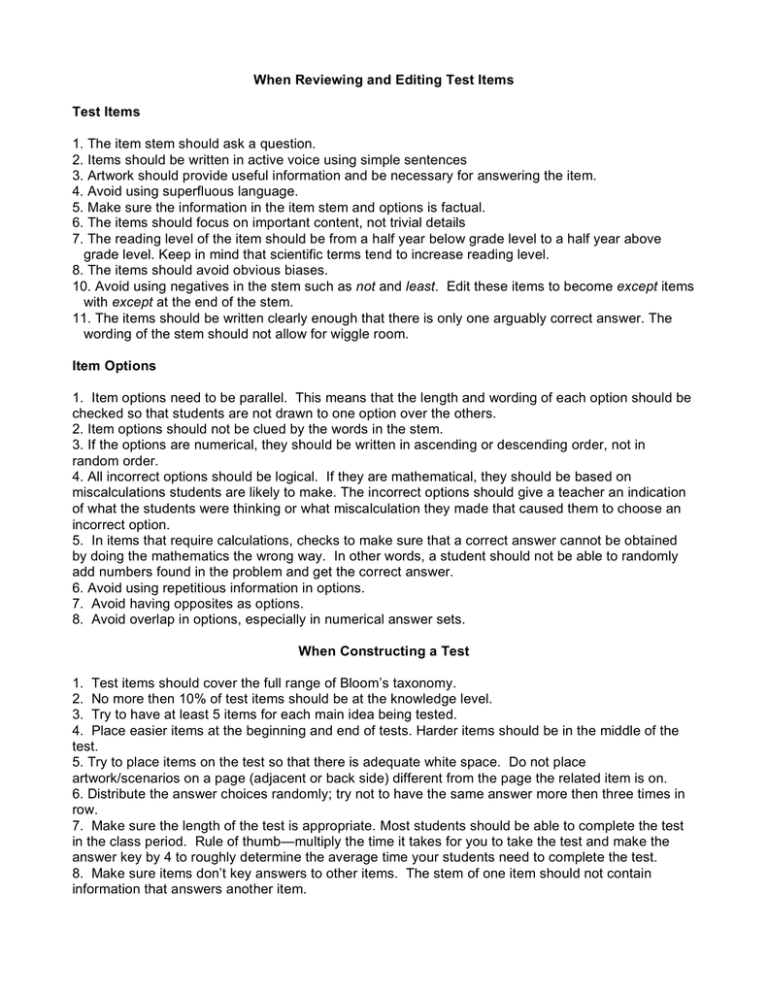Test Item Review & Construction Guidelines
advertisement

When Reviewing and Editing Test Items Test Items 1. 2. 3. 4. 5. 6. 7. The item stem should ask a question. Items should be written in active voice using simple sentences Artwork should provide useful information and be necessary for answering the item. Avoid using superfluous language. Make sure the information in the item stem and options is factual. The items should focus on important content, not trivial details The reading level of the item should be from a half year below grade level to a half year above grade level. Keep in mind that scientific terms tend to increase reading level. 8. The items should avoid obvious biases. 10. Avoid using negatives in the stem such as not and least. Edit these items to become except items with except at the end of the stem. 11. The items should be written clearly enough that there is only one arguably correct answer. The wording of the stem should not allow for wiggle room. Item Options 1. Item options need to be parallel. This means that the length and wording of each option should be checked so that students are not drawn to one option over the others. 2. Item options should not be clued by the words in the stem. 3. If the options are numerical, they should be written in ascending or descending order, not in random order. 4. All incorrect options should be logical. If they are mathematical, they should be based on miscalculations students are likely to make. The incorrect options should give a teacher an indication of what the students were thinking or what miscalculation they made that caused them to choose an incorrect option. 5. In items that require calculations, checks to make sure that a correct answer cannot be obtained by doing the mathematics the wrong way. In other words, a student should not be able to randomly add numbers found in the problem and get the correct answer. 6. Avoid using repetitious information in options. 7. Avoid having opposites as options. 8. Avoid overlap in options, especially in numerical answer sets. When Constructing a Test 1. Test items should cover the full range of Bloom’s taxonomy. 2. No more then 10% of test items should be at the knowledge level. 3. Try to have at least 5 items for each main idea being tested. 4. Place easier items at the beginning and end of tests. Harder items should be in the middle of the test. 5. Try to place items on the test so that there is adequate white space. Do not place artwork/scenarios on a page (adjacent or back side) different from the page the related item is on. 6. Distribute the answer choices randomly; try not to have the same answer more then three times in row. 7. Make sure the length of the test is appropriate. Most students should be able to complete the test in the class period. Rule of thumb—multiply the time it takes for you to take the test and make the answer key by 4 to roughly determine the average time your students need to complete the test. 8. Make sure items don’t key answers to other items. The stem of one item should not contain information that answers another item.



